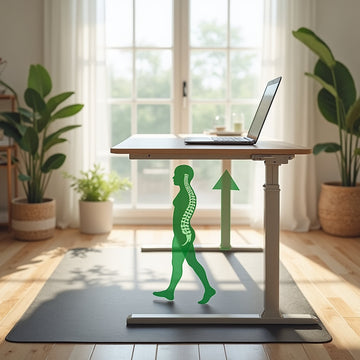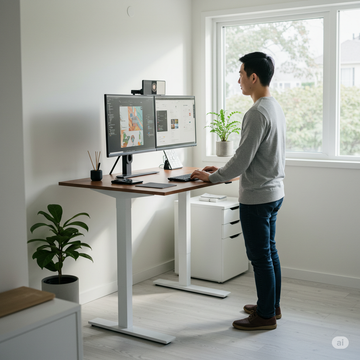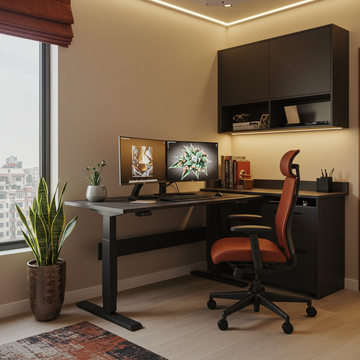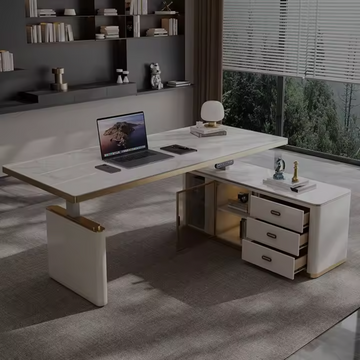The Science Behind Standing Desks & Back Pain Relief
1. Less Pressure on Spinal Discs
-
The Problem: Sitting compresses lumbar discs by 40% more than standing (Nachemson, 1981). Over time, this can lead to herniation or chronic stiffness.
-
The Fix: Standing reduces disc load, letting your spine decompress naturally.
2. Engages Core & Postural Muscles
-
The Problem: Slouching in a chair weakens core muscles, forcing ligaments (not muscles) to hold you up.
-
The Fix: Standing activates your abs and back muscles, improving stability (Harvard Health, 2018).
3. Encourages Micro-Movements
-
The Problem: Sitting for 6+ hours/day slows blood flow, stiffening joints.
-
The Fix: Standing desks increase subtle shifts in weight (swaying, stretching), boosting circulation (British Journal of Sports Medicine, 2015).
4. Reduces Lower Back Strain
-
The Problem: 80% of desk workers report back pain—linked to prolonged sitting (CDC, 2020).
-
The Fix: Alternating sit/stand every 30 mins cuts discomfort by 54% (Applied Ergonomics, 2016).
5. Improves Posture Long-Term
-
The Problem: Chairs encourage rounded shoulders and forward head posture.
-
The Fix: Standing aligns ears over shoulders and hips, reducing neck strain.
How to Use a Standing Desk Without New Pain
-
Start slow: 15–30 mins standing per hour, then increase.
-
Wear supportive shoes (no barefoot marathons!).
-
Anti-fatigue mats reduce joint pressure.
Standing desks aren’t magic—but science says they do reduce back pain by easing disc pressure, engaging muscles, and breaking up sedentary time. Pair one with movement breaks for max benefits.
Ready to ditch the chair? Your back will thank you.






